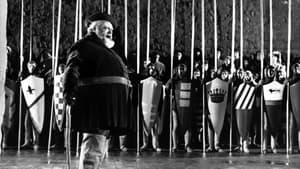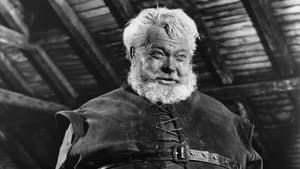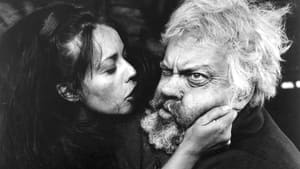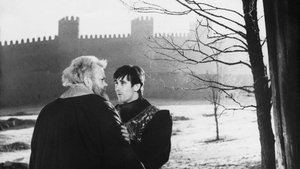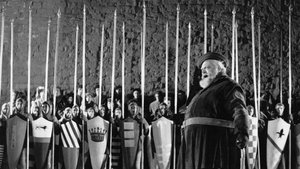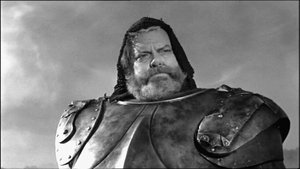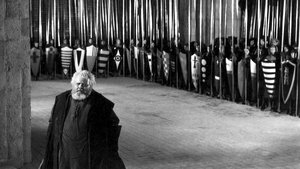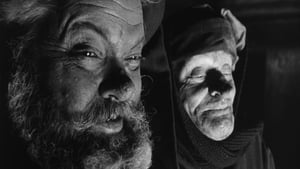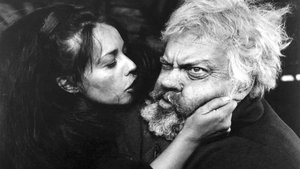Video Sources 0 Views
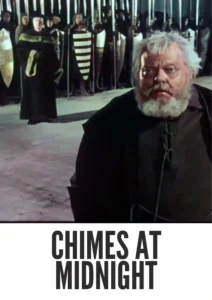
Synopsis

Experience Orson Welles’ cinematic triumph, Chimes at Midnight, a 1965 masterpiece now gloriously colorized to amplify its visual and emotional impact. Welles, both directing and starring as Sir John Falstaff, crafts a poignant and powerful adaptation of Shakespeare’s “Henriad” plays, exploring themes of loyalty, betrayal, and the loss of innocence amidst the backdrop of medieval England. Featuring a stellar cast that includes John Gielgud, this HD download offers a unique opportunity to witness Welles’ genius in bringing Shakespeare to life on the silver screen, cementing its place as a monumental work of cinematic art.
Chimes at Midnight weaves together elements from Shakespeare’s Henry IV, Parts 1 and 2, Richard II, Henry V, and The Merry Wives of Windsor, centering on the charismatic and ultimately tragic figure of Sir John Falstaff. The story unfolds during the reign of King Henry IV (John Gielgud), whose son, Prince Hal (Keith Baxter), spends his days in the company of Falstaff, a boisterous and larger-than-life character who embodies the joys of life, liberty, and the pursuit of pleasure.
As Hal prepares to assume his royal duties, he must confront the conflicting loyalties between his friendship with Falstaff and the responsibilities that come with being the future King of England. The film explores the complex dynamic between Hal and Falstaff, as Hal’s youthful indiscretions give way to the realities of power and the inevitable severing of ties with his former life.
The narrative culminates in Hal’s coronation as King Henry V, where he publicly rejects Falstaff, marking the end of their friendship and the symbolic death of “Merrie England.” Chimes at Midnight is a deeply moving and thought-provoking exploration of friendship, duty, and the sacrifices that must be made in the pursuit of power.
The film features an extraordinary cast of actors who bring Shakespeare’s characters to life with depth and nuance:
-
Orson Welles as Sir John Falstaff
-
Keith Baxter as Prince Hal
-
John Gielgud as King Henry IV
-
Jeanne Moreau as Doll Tearsheet
-
Margaret Rutherford as Mistress Quickly
Chimes at Midnight transcends traditional genre classifications, blending elements of historical drama, tragedy, and comedy. It is a powerful and moving exploration of Shakespearean themes, brought to life with Welles’ signature cinematic vision.
Released in 1965, Chimes at Midnight represents the culmination of Orson Welles’ lifelong fascination with Shakespeare and the character of Falstaff. Welles considered Falstaff to be one of Shakespeare’s greatest creations and sought to capture the character’s complexity and humanity in this ambitious adaptation. The film reflects Welles’ deep understanding of Shakespearean themes and his ability to translate them into a visually stunning and emotionally resonant cinematic experience. It is a testament to Welles’ genius as a filmmaker and his enduring love for the works of William Shakespeare.
This colorized version of Chimes at Midnight has been meticulously restored using advanced digital techniques, enhancing the visual experience while preserving the film’s original atmosphere and artistic integrity. The colorization process involved a careful and nuanced approach, with attention paid to recreating the look and feel of medieval England. The resulting color palette enhances the characters, settings, and emotions of the story, making it even more engaging for modern audiences. While some may debate the merits of colorizing classic films, it introduces these films to a broader audience, ensuring their continued relevance for generations to come.
-
: Orson Welles
-
: Orson Welles (adapted from William Shakespeare)
-
: Edmond Richard
-
: Fritz H. Mueller
-
: Alpine Films
-
: Peppercorn-Wormser Films
-
: 115 minutes
-
: MP4
-
: HD (1080p)
-
: Compatible with most devices, including smartphones, tablets, computers, and smart TVs.
Chimes at Midnight (1965) is widely regarded as one of Orson Welles’ greatest achievements and a landmark in cinematic history. It has been praised for its powerful performances, its innovative use of cinematography, and its faithful adaptation of Shakespeare’s works. The film continues to be celebrated by critics and audiences alike, solidifying its place as a true masterpiece.
-
: What is Chimes at Midnight about?
-
A: Chimes at Midnight is a Shakespearean adaptation that explores the relationship between Prince Hal and Sir John Falstaff, as Hal prepares to become King Henry V.
-
-
: Is Chimes at Midnight (1965) a well-known Orson Welles film?
-
A: Yes, Chimes at Midnight is considered one of Welles’ most important and influential works.
-
-
: Is this version of Chimes at Midnight colorized?
-
A: Yes, this version has been professionally colorized to enhance the viewing experience.
-
-
: What makes Chimes at Midnight interesting for Shakespeare fans?
-
A: Chimes at Midnight offers a unique and compelling interpretation of Shakespeare’s “Henriad” plays, brought to life with Welles’ cinematic vision.
-
-
: What is the download format?
-
A: The download format is MP4, which is compatible with most devices.
-
-
: What resolution is the download?
-
A: The resolution is HD (1080p), providing a high-quality viewing experience.
-
Watch Chimes at Midnight Today!
